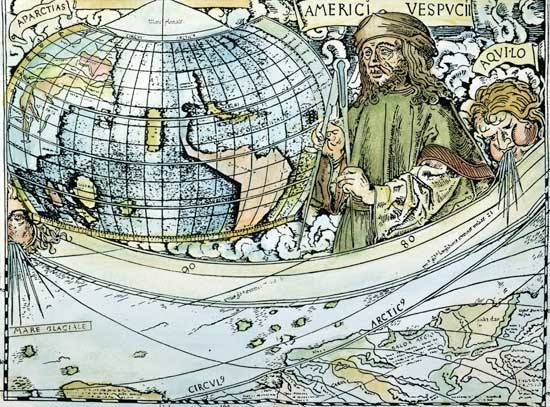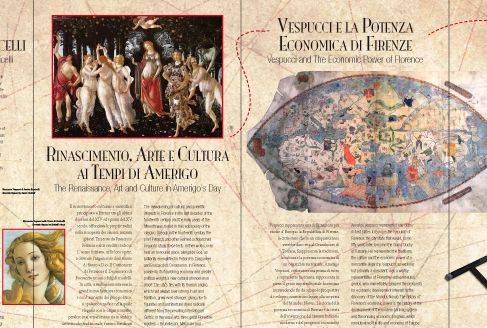Amerigo's America: The New World Honors Vespucci's Ingenuity
America owes its name to Italian explorer and adventurer Amerigo Vespucci. Vespucci arrived here in 1497, five years after Christopher Columbus did, but he was the first to realize this was not a part of Asia, rather a “New World.”
Five hundred years after Vespucci’s death, his ingenuity and entrepreneurial talent are being celebrated with a bilingual exhibition titled “Amerigo’s America (1512-2012), Florence and the Merchants of the New World.”
Organized by Fiorentini Nel Mondo -- the association of Florentines in the world -- and by the European School of Economics in Florence, “Amerigo’s America” will open at St. John’s University on February 22, the exact date that marks the 500th anniversary of the death of the Florentine navigator.
The New York edition of the exhibit (which will be moved to Florence on March 25 and to Tokyo in October 2012) has an extremely symbolic meaning.
Joseph Sciame, Vice President for Community Relations at St. John’s and Chairman of St. John’s Italian Culture Center, defines it “a once in a lifetime exhibit,” and he looks forward for it to be visited “by the Italian-American community, that through it will be able to understand the contribution of the Florentine world to the greater world in which we live today.” Sciame, who is also the President and Chairman of the Italian Heritage and Culture Committee, says he’s “doubly involved in the exhibition,” as this year “the Committee will honor the achievements of Vespucci in a special way.”
Francesco Bardazzi, Fiorentini Nel Mondo’s delegate to New York City, told i-Italy about the importance of a historical figure such as Vespucci, who was not only an explorer, but especially a businessman: “Vespucci was a representative of great economic interests of important families such as the Medici of Florence, but he was also in touch with the Spanish court of Seville and with the French kingdom.”
The discovery of America has itself been an entrepreneurial activity, Bardazzi argues, and Florence “was the New York of that time, the financial capital of the world.”
The culture of the Florentine merchants throughout the fifteenth and sixteenth centuries is a central theme of the exhibit, and it is further analyzed in an essay by Andrea Galluzzo, President of Fiorentini Nel Mondo, which provides useful elements to analyze the history of geographical explorations through the lens of economic history.
The exhibit was also made possible by the co-sponsorship of CUNY's John D. Calandra Italian/American Institute and by the support of the New York group of Toscani Nel Mondo, headed by Joan Marchi Migliori. “Although we are a smaller group here than in California, where Tuscans would emigrate to most frequently, we are hoping to enlarge our group to a younger membership, which will be open to ‘friends’ of Tuscany as well.”
Tuscany’s appeal to Americans goes far beyond family heritage and history, Migliori and Bardazzi explain. “More than 30,000 American students every year choose to spend a semester in Florence, a city of 400,000 people. They represent 10% of it, and they prefer it to other destinations in Italy such as Rome.”
The opening of the exhibition will be anticipated by a conference, which will be held at St. John’s University’s Manhattan Campus at 6 pm on February 22.
The conference will feature guest speakers such as President of Fiorentini Nel Mondo Andrea Galluzzo, Academic Director of European School of Economics Stefano Cordero di Montezemolo, Madrid delegate of Fiorentini Nel Mondo Stefano Rosi Galli and New York delegate Francesco Bardazzi. The conference will be moderated by Dean of Calandra Italian/American Institute Anthony Julian Tamburri and the presence of Consul General of Italy Natalia Quintavalle and of St. John’s Joseph Sciame is also expected.
Registration to the conference and opening of the exhibit is required.
To register, call Calandra Institute at 212 642 2094 or email Joan Migliori at joan.migliori@qc.cuny.edu.
The exhibition will be open to the public from February 28 to March 2.
Download all the info below.





































i-Italy
Facebook
Google+
This work may not be reproduced, in whole or in part, without prior written permission.
Questo lavoro non può essere riprodotto, in tutto o in parte, senza permesso scritto.